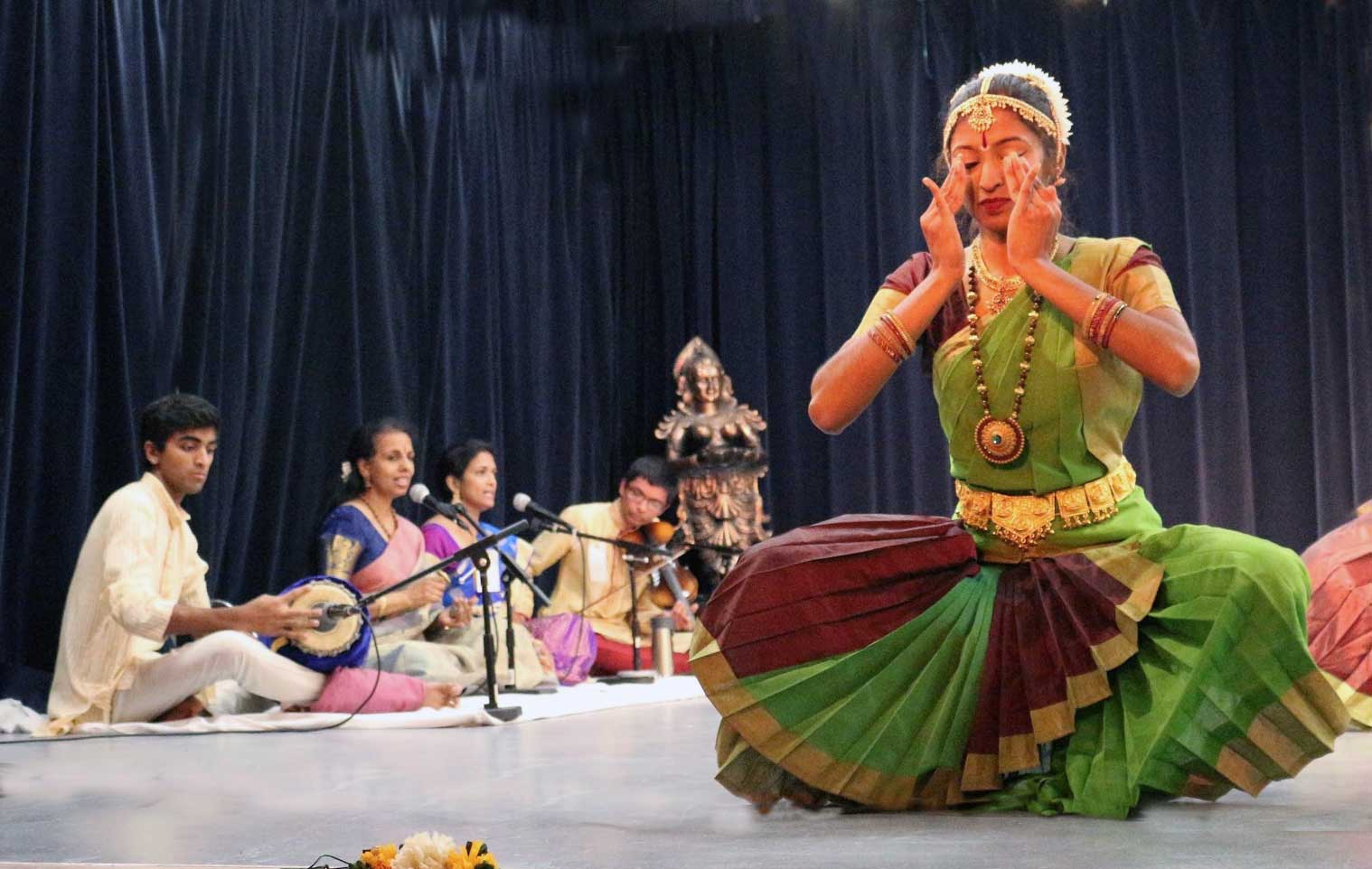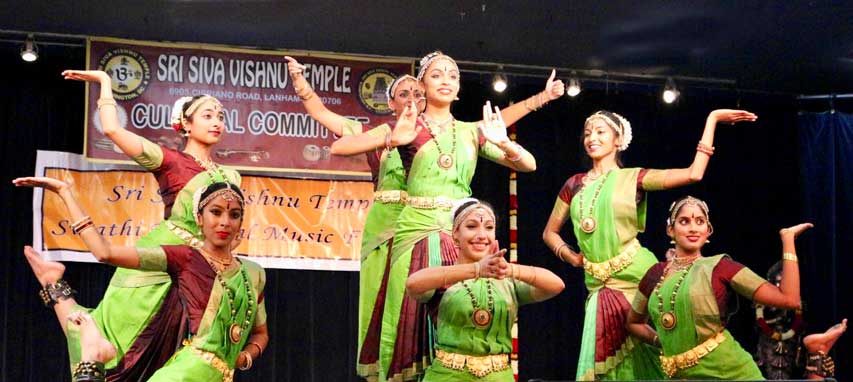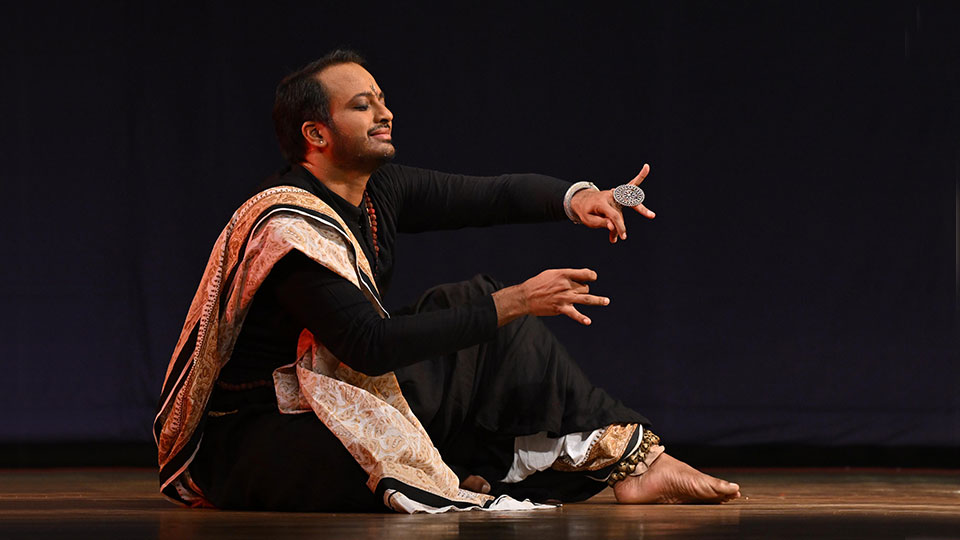The Swathi Tirunal Music and Dance Festival at the Siva Vishnu Temple ( Lanham MD, USA) was held on 29th Sept. 2018, to celebrate Maharaja Swathi Tirunal’s immense contribution to both the Carnatic and Hindustani classical music.

Maharaja Swathi Tirunal was a very versatile and gifted composer of songs, writing in many languages, apart from being a great patron of the arts. Many artists including dancers and musicians flourished during his reign in the 19th century in Travancore.
Jayamangala, a premier non-profit arts academy in the DC metro area, presented a dance- drama in three parts to honour the legacy of Maharaja Swathi Tirunal’s myriad creations, with a live orchestra to accompany the dancers’ performance. The live orchestra enhanced the vibrant execution of movements by the dancers on stage.
The melodious live devotional rendering of Gopalaka Paahiman in Revagupti and Misra Chapu thalam, by Mrs Shobha Subramaniam (Vocal and Nattuvangam) and accompanied by Vidya Sathiyamoorthy (Vocal) set the right introduction for the dancers to step to the rhythm as they depicted a few of Krishna’s life stories. Young artists Madhava Paliyam on Mridangam and Ashwin Iyer on Violin completed the live orchestra team. The songs capture the diverse beauty of the national, classical Sanskrit and regional languages of India.
The audience was captivated by the large team of dancers – two or three dancers pairing up effortlessly to enact in tandem how Krishna ate mud and angered his Mother Yashoda, her utter horror when she saw her son’s mouth wide open revealing the whole world in his tiny mouth and how Krishna, the omniscient Lord, transformed the life of his childhood friend Sudama. Sudama, a poor Brahmin, too shy to ask favours from Krishna – yet offers him sweetened rice flakes as a modest gift and in return Lord Krishna showers riches on him and his family. The dancers captured each and every nuance of emotion – surprise, horror and happiness to name a few, with a graceful lift of their delicate eyebrows, a head tilt, lips curled up for a smile and almond-shaped eyes darting in unison.

Pastel greens and earth coloured costumes with elegant accessories helped the audience to appreciate the dancers’ expressions rather than be distracted by loud, snazzy ensemble. Following the live melody perfectly timed to match the drama unfolding on the stage was not only challenging but also enjoyable. The luxury of experiencing rich, melodious live orchestra on stage versus recorded music especially, for a dance-drama sequence was a compelling revelation.
The second part was a solo – a Telugu Javali where naughty Krishna teases a young girl. Meera Raja’s eloquent gestures and fleeting expressions of affected annoyance as well as pleasure and amusement added flair to the piece. The song was rendered in ragam saindavi and talam Adi.
A simple but iconic Tillana in Dhanasri ragam and Adi Talam concluded the dance drama. The dancers’ fast rhythmic footwork was in perfect sync to the lilting foot-tapping melody in the Hindi language. Tillana is a dedication to sangeetham and natyam taking form in Ananta Padmanabha’s various avatarams. The meticulous team poses, choreographed by Guru Shobha was indeed breathtaking, a perfect photo-worthy moment – evoking enthusiastic applause from the audience.
The dancers were Akshaya Anand, Priyanka Jayanti, Surya Radhakrishnan, Meera Raja, Geetika Reichmann, Sisters Archana and Vandana Sathiyamoorthy – most of them have graduated from the Jayamangala school.
The MC Madhulika Nallani introduced the team, the musicians and explained succinctly, with elegant gestures the meaning of the dances. Jayamangala has trained, nurtured and produced several young talents in vocal and instrumental music and Bharatnatyam for the past twenty-five and more years. Many of the students continue to practice and perform into their adult years spreading Indian classical dance and music far and wide.










